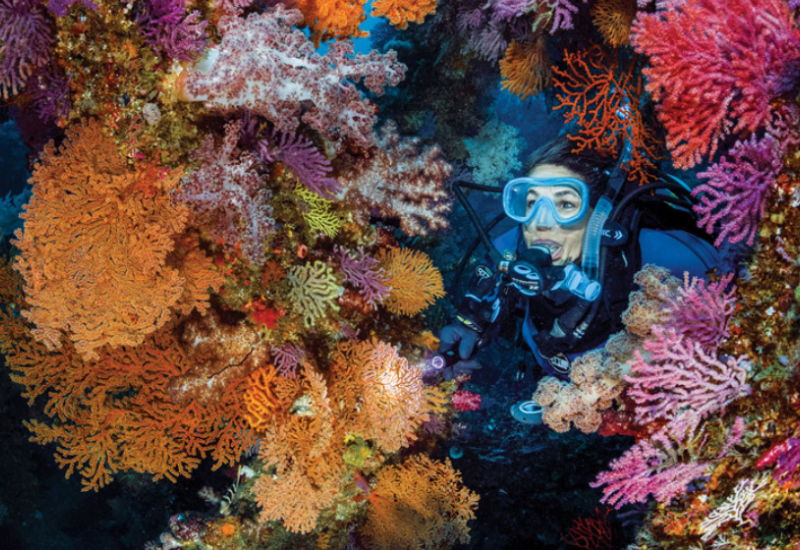Japan

The coastal waters of Japan belong almost exclusively to the fishermen who supply the Japanese population with most of the protein in its diet. Reluctantly, the fishermen share a small portion of their realm with the many scuba divers from Tokyo who descend upon coastal fishing villages every weekend. For logistical and other reasons, very few gai-jin (foreigners) have dived in temperate Japanese waters.
Dive In:
Japan's Izu Peninsula
Getting There: From Tokyo, you can get to towns at the base of the Izu Peninsula by train in under two hours, and from there use local train lines or a taxi to reach your final destination. Another method is to sign up for a weekend tour with a Tokyo dive shop that provides a van to transport divers and gear.
Best Time to Visit: Diving at Izu is done year-round, but conditions are highly variable. In summer and early autumn, water temperature may reach the low 80s, underwater visibility is typically 15 to 30 feet and popular dive sites can be extremely crowded. In winter, water temperature may drop to the mid-50s, visibility increases to 40 to 80 feet (even more at offshore islands), but the weather can be less reliable. Dry suits are highly recommended for winter diving at Izu.
Documents: You must have a passport; visas are not required for U.S. citizens staying less than 90 days.
Electricity: 100v AC, 50Hz; U.S.-style plugs. Most American-made electrical devices will function reasonably well without need for a converter.
Money Matters: At press time the U.S. dollar was worth about 110 Japanese yen. Credit cards are widely used in major cities, but for Izu you will need cash. Change money at the airport or in Tokyo, and bring lots of it--both diving and accommodations are quite expensive. A two-tank boat dive can be $125 or more.

The coastal waters of Japan belong almost exclusively to the fishermen who supply the Japanese population with most of the protein in its diet. Reluctantly, the fishermen share a small portion of their realm with the many scuba divers from Tokyo who descend upon coastal fishing villages every weekend. For logistical and other reasons, very few gai-jin (foreigners) have dived in temperate Japanese waters.
Dive In:
Japan's Izu Peninsula
Getting There: From Tokyo, you can get to towns at the base of the Izu Peninsula by train in under two hours, and from there use local train lines or a taxi to reach your final destination. Another method is to sign up for a weekend tour with a Tokyo dive shop that provides a van to transport divers and gear.
Best Time to Visit: Diving at Izu is done year-round, but conditions are highly variable. In summer and early autumn, water temperature may reach the low 80s, underwater visibility is typically 15 to 30 feet and popular dive sites can be extremely crowded. In winter, water temperature may drop to the mid-50s, visibility increases to 40 to 80 feet (even more at offshore islands), but the weather can be less reliable. Dry suits are highly recommended for winter diving at Izu.
Documents: You must have a passport; visas are not required for U.S. citizens staying less than 90 days.
Electricity: 100v AC, 50Hz; U.S.-style plugs. Most American-made electrical devices will function reasonably well without need for a converter.
Money Matters: At press time the U.S. dollar was worth about 110 Japanese yen. Credit cards are widely used in major cities, but for Izu you will need cash. Change money at the airport or in Tokyo, and bring lots of it--both diving and accommodations are quite expensive. A two-tank boat dive can be $125 or more.










